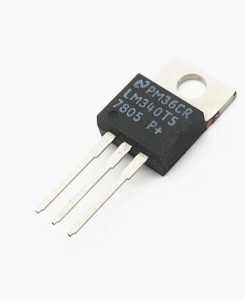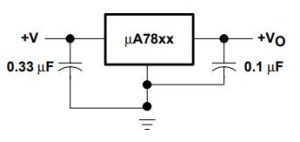Dive into the realm of voltage regulators with a particular focus on the ubiquitous 7805 voltage regulator. Gain an understanding of voltage regulation, explore the features of the 7805 regulator, and uncover its circuitry. This blog offers a thorough overview of the IC 7805 voltage regulator, detailing its pivotal role in maintaining a stable power supply across various electronic applications. Join us as we delve into the workings and significance of the 7805 voltage regulator in the field of electronics.
What is a Voltage Regulator?
A voltage regulator is an essential electronic component that maintains a constant voltage level regardless of fluctuations in load or input voltage. It ensures that electronic devices receive a stable power supply, preventing malfunction and damage. Voltage regulators come in two main types: linear and switch-mode, and they can be used in both AC and DC circuits. They operate by comparing the input voltage to a reference voltage and adjusting the output voltage accordingly using an internal voltage reference, an error amplifier, and a series pass transistor. Notable types of voltage regulators include the 7805, LM317, and LM7805.
Introducing the 7805 Voltage Regulator
The 7805 voltage regulator is a popular type of linear voltage regulator widely used in electronic circuits. This three-terminal device provides a fixed output voltage of 5V, capable of handling input voltages ranging from 7V to 35V. The 7805 is celebrated for its simplicity, stability, and affordability. It utilizes an internal voltage reference, an error amplifier, and a series pass transistor to maintain a consistent output voltage. Additionally, the 7805 is known for its low dropout voltage, thermal overload protection, and short circuit protection. Common applications include powering microcontrollers, stabilizing power supplies, regulating voltage in battery-powered devices, and converting voltage in automotive systems. The IC is available in various packages such as TO-220, TO-252 (DPAK), SOT-89, and TO-92, with TO-220 being the most commonly used.

Features of the 7805 Voltage Regulator
- Input Voltage Range: Accepts input voltages between 7V and 35V, making it versatile for various power supply applications.
- Output Voltage: Provides a fixed output voltage of 5V.
- Output Current: Delivers up to 1.5A of output current, suitable for powering a range of electronic devices.
- Thermal Protection: Built-in thermal protection prevents damage by shutting down the IC if the internal temperature becomes too high.
- Low Dropout Voltage: Maintains a stable output voltage even when the input voltage is close to the output voltage.
- Operating Current: 5 mA.
- Ease of Use and Availability: Simple to use and widely available.
Pin Diagram
- Input Voltage (Vin)
- Ground (GND)
- Output Voltage (Vout)
7805 Voltage Regulator Circuit
To incorporate the 7805 voltage regulator into a circuit, connect the input voltage to the Vin pin, the GND pin to ground, and the Vout pin to the device requiring a stable 5V power supply. In a typical power supply circuit, the 230V AC input is converted to DC using a step-down transformer. The ripples are filtered out with capacitive filters before being fed into the 7805 IC, which ensures a constant 5V supply for various applications.

Working Principle of the IC 7805 Voltage Regulator
The circuit can be divided into two sections: the first converts AC to DC, and the second converts this DC into a regulated 5V DC. By connecting the primary winding of a step-down transformer to the mains supply, the voltage is reduced from 230V to 9V. This reduced voltage is then rectified by a bridge rectifier and smoothed by a 470uF capacitor, resulting in an unregulated 9V DC. The 7805 regulator accepts this DC input and produces a regulated 5V DC output. The input voltage must always be higher than the output voltage, and the output current closely matches the input current. For instance, if the input is 7.5V at 1.5A, the output will be 5V at 1.5A. The 7805 IC dissipates the excess power as heat.
Advantages
- Simple and user-friendly
- Wide input voltage range
- Stable output voltage
- Low power consumption
- Cost-effective
Applications
- Powering microcontrollers and other small electronic devices
- Stabilizing power supplies
- Regulating voltage in battery-powered devices
- Voltage conversion in automotive systems
Conclusione
Understanding the importance of voltage regulation is essential in various electronic applications. The 7805 voltage regulator is a standout choice due to its simplicity and efficiency. Implementing the 7805 voltage regulator circuit ensures stabilized and regulated voltage levels, facilitating the smooth operation of your electronic devices. The working principle of the IC 7805 voltage regulator exemplifies its capability to handle voltage fluctuations and deliver a steady output. Whether you are an electronics enthusiast or a professional, utilizing the 7805 voltage regulator guarantees a stable and reliable power supply for your projects. Embrace this versatile regulator and unlock the potential of your electronic creations!
If you found this post helpful, please share it . Don’t forget to check out our other blog !
